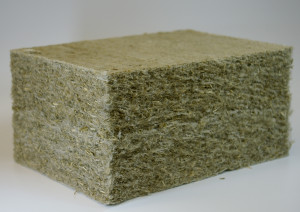Home remodeling is tough, but these three major oversights can make the process nearly unmanageable.
Photo courtesy of ZipWall.
No matter how much effort and attention is put into planning the details of a remodel with your clients, builders often have to confront disasters caused because homeowners didn’t factor certain things in to the remodel. The best time to handle surprises like these is before they happen. When collaborating with your clients to plan their project, make sure your clients have answers to these three questions before work begins.
Photo courtesy of Wikimedia Commons.
Because they are eager to have their dream home, your clients will often budget every single penny of the remodel to be used FOR the remodel. Surprise materials expense increases, accidental damage, weather-related project delays, and unforeseen structural issues that are only revealed when walls are ripped out are only a few examples of situations that cause unexpected cost overruns.
In the midst of a stressful remodel, an unexpected extra thousand in costs can become an unmanageable obstacle for everyone. Keep your project on track by making sure that your clients set aside five to ten percent of their total remodeling budget for contingency expenses.
Hemp-based insulation. Photo Courtesy of Wikimedia Commons.
Even if the homeowner hasn’t directly stated an interest in making their home more eco-conscious, the financial and environmental benefits of greener homes make this a discussion worth having. The best time to beef up a home’s insulation is when the project already involves ripping into the walls. If the kitchen or bathroom are being remodeled, a tankless water heater, water-conserving fixtures, LED’s, and Energy Star appliances will shrink the home’s energy usage and lower monthly utility bills. Replace the windows and doors with insulated, Energy Star- rated models.
It’s true the going green can cost quite a bit of green upfront. But clients will immediately see a return on their investment when their utility bills start shrinking. Financial benefits will also appear when it’s time to sell the home, as greener homes also retain a higher resale value over time than their non-green counterparts.
Ruts left behind after the concrete truck visited to pour the foundation for a new addition. Photo courtesy of seeking-sparkle.blogspot.com
Sometimes the heavy traffic and machinery involved in a remodel means quite a bit of land-scraping, even when the work being done is an interior remodel. The driveway and part of the yard will undoubtedly be part of the staging area for supplies and equipment. The main access to the project may not be the front door, and workers may track all around the house and through the yard to reach the area being worked on. Fences, fountains, flowerbeds, and other landscape features may have to be ripped out altogether so that the contractor can access the area being remodeled.
On the other hand, another reason to consider landscaping is when renovations drastically update the look of the house. Old landscaping in front of a new-looking house will look outdated and sad. This lowers the curb appeal of a house that homeowners have spent heavily to improve in order to have a better sale.
Without doubt the most common oversight homeowners commit is forgetting that their yard needs to be put back in order after the remodel is complete. Often, they don’t even consider it until they see how badly damaged their yard is after the work is finished. Make sure your clients have set aside some of their remodeling budget to restore their yard afterwards, even if they aren’t sure what sort of landscaping needs to be done.




